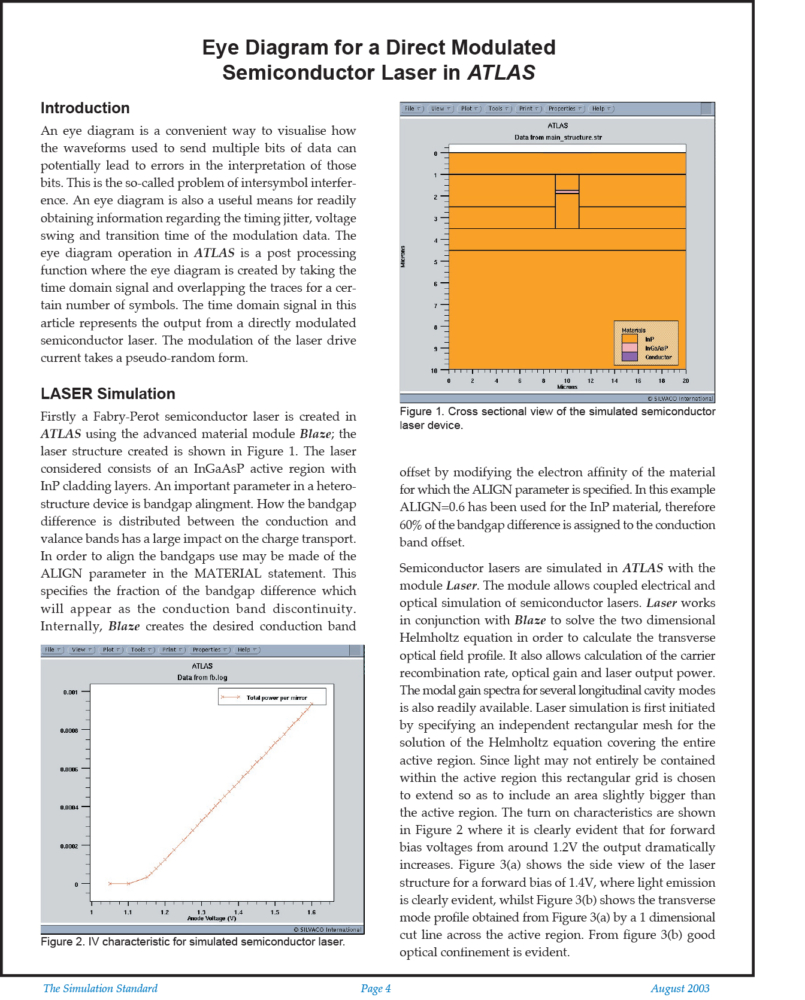Eye Diagram for a Direct Modulated Semiconductor Laser in ATLAS
Introduction
An eye diagram is a convenient way to visualise how the waveforms used to send multiple bits of data can potentially lead to errors in the interpretation of those bits. This is the so-called problem of intersymbol interference. An eye diagram is also a useful means for readily obtaining information regarding the timing jitter, voltage swing and transition time of the modulation data. The eye diagram operation in ATLAS is a post processing function where the eye diagram is created by taking the time domain signal and overlapping the traces for a certain number of symbols. The time domain signal in this article represents the output from a directly modulated semiconductor laser. The modulation of the laser drive current takes a pseudo-random form.



